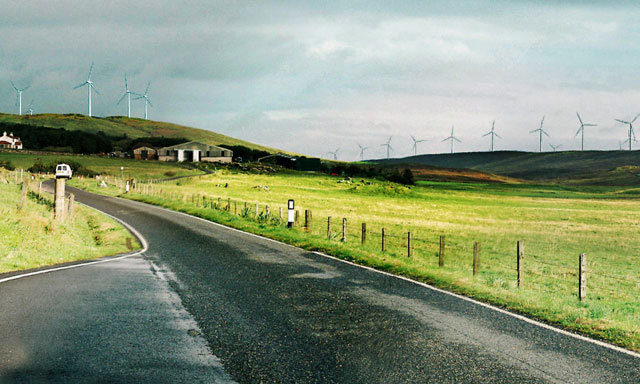
A new report setting out the how onshore wind projects in Scotland have contributed to the restoration and promotion of peatland has been released.
Scottish Renewables explored several case studies where developers “positive” and “sensitive” management lead to damaged peatland being restored, encouraging biodiversity and enhancing its ability to store carbon.
The findings of the study have been release to coincide with UK Wind Week.
More than a fifth of Scotland is covered by peat but it’s estimated that around 80% has been progressively damaged over time by forestry, over-grazing and drainage.
Healthy peatland, which is formed when plants die and partially decay, has an important role to play in limiting climate change.
As the vegetation hasn’t fully decayed, the carbon it’s removed from the atmosphere remains trapped in the soil.
It’s estimated there is around 1,600 million tonnes of carbon stored in Scotland’s peatland – the equivalent of 140 years of greenhouse gas emissions at current levels.
Entitled Wind Power and Peatland: Enhancing Unique Habitats, the report studied more than £2.5 million of work carried out by RWE Renewables, ScottishPower Renewables and SSE Renewables across Scotland.
One of the developments examined was SSE’s major Viking wind farm development in Shetland, which has committed to restoring 260 hectares peatland.
Further landscape renewal is planned as part of the energy provider’s Strathy South wind farm in Caithness, if a variation to its planning permission is consented.
The document was produced with help from the three renewable energy businesses, all of which employ peatland experts to oversee work at wind farm sites.
It also contains detail on The Scottish Government’s Carbon Calculator, which is used to ensure that the carbon payback is taken into account during decision making.
Scottish Renewables’ Director of Communications and Strategy, Nick Sharpe, said: “Both wind power and peatlands play a vital role in tackling the carbon emissions which cause climate change, so it’s only right that they complement each other. This publication shows how developers are caring for peatlands near their projects and spending millions of pounds correcting damage which has been done over many decades.
“The onshore wind sector is the backbone of Scotland’s energy system, but the many benefits it brings to rural Scotland are often not fully understood. This document goes some way to showing the renewable energy industry’s role as a key partner in Scotland’s rural areas, delivering jobs and investment, protecting and restoring natural habitats and tackling the most serious threat to Scotland’s biodiversity: climate change.”
Recommended for you

